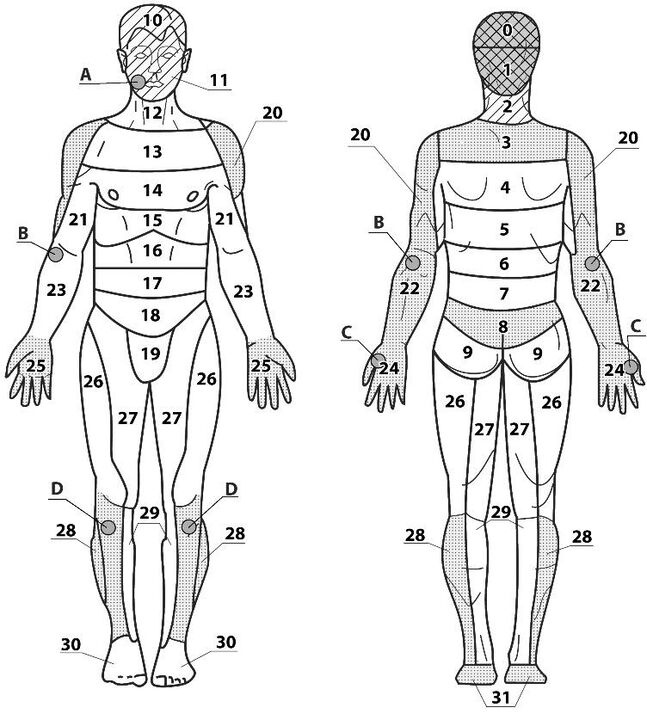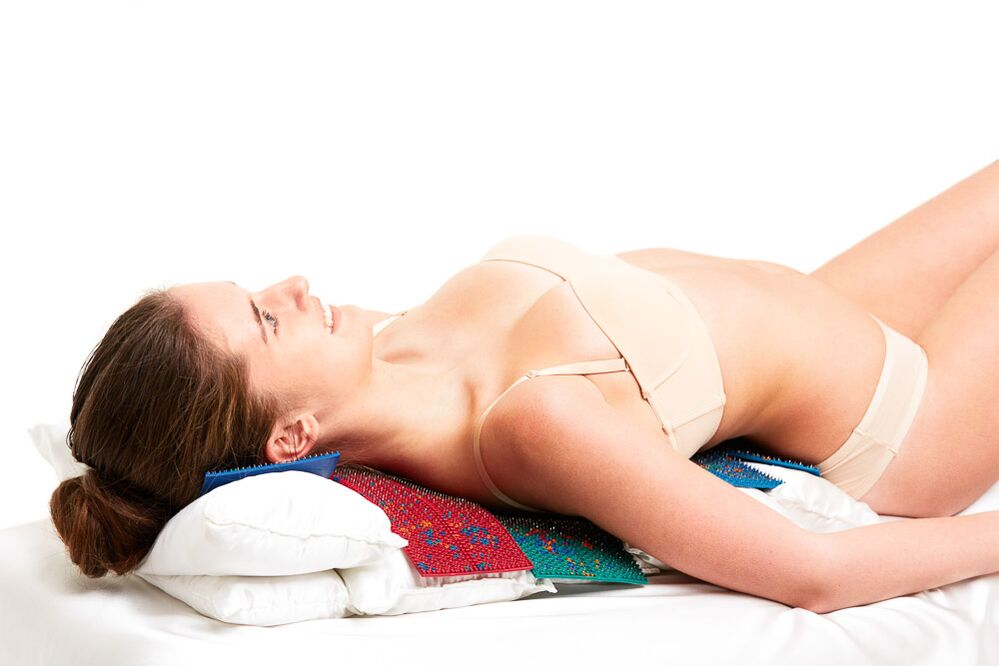Cervical spondylosis is a progressive dystrophic degenerative lesion of the intervertebral discs in the 1-7 vertebral regions of the cervical spine.
The result is cervical osteochondrosis, deformity, exhaustion, and subsequently damage to the vertebral bodies. This disrupts the normal blood supply and nerve conduction in the neck and in the inner regions of the nerve roots of the cervical spine.
Cervical fibroids can be isolated or combined with osteonecrosis of other parts - thoracic, lumbar and sacral.
Reason
Several factors that lead to the development of osteonecrosis are distinguished. Including:
- sedentary and sedentary lifestyle;
- sedentary types of work with a static load on the neck;
- overweight, not physically developed enough;
- dysplastic processes of connective tissue;
- circulatory disorders in the neck;
- neck injury;
- curvature of the spine, lying in the wrong position, uncomfortable pillows and mattresses;
- genetic predisposition, metabolic malformation.
Symptoms of cervical osteonecrosis. Complications
The cervical spine is the most vulnerable site in the development of osteonecrosis. The vertebrae in it are the smallest compared to other parts of the spine, the muscular framework is not obvious, the weight of the head and the upright posture affect the vertebrae. In the cervical spine, the vertebrae are tightly packed together. Even a small change in them can lead to compression and even displacement of nerves and blood vessels.
The most characteristic symptom that the patient complains is pain in the cervical spine. Depending on the affected area, the pain may be localized: in the collarbone and shoulder; throughout the cervical spine; on the anterior surface of the chest.
The first signs of fibroids may be minor: feeling of heaviness in the head, occipital headaches, neck pain at night, numbness or tingling in the shoulders and arms.
Top symptoms
Macrobiotic-dystonic.
Severe "shooting" pain in the neck, in the area just below the occipital. Pain occurs after a long time in one position, after sleeping, the neck muscles are constantly tense.
Difficulty moving the hand to the side, stiffness, numbness in the fingers. Due to compression of the vertebral arteries, neurological manifestations are observed: headache, nausea, dizziness, unreasonable jump in blood pressure.
Spine symptoms.
The pain is localized behind the left sternum.
This type of pain should be distinguished from angina (with angina, nitroglycerin relieves pain, with osteonecrosis not).
With the gradual breakdown of the structure of the intervertebral discs, compression and invasion of the nerve roots occur, as well as narrowing or invasion of the arteries and veins that pass in the region of the vertebral bodies.
This leads to the formation of special syndromes - lens and ischemia:
- loss of root of first cervical vertebra (C1): occipital abnormality;
- Damage to C2 causes pain in the occipital region;
- C3 lesions cause neck pain from the affected side, decreased sensitivity in the tongue and hypogastric muscles, possibly impaired speech;
- C4 and C5 lesions cause pain in the shoulder and collarbone, decreased muscle tone in the head and neck, hiccups, breathing disturbances, and pain in the heart;
- Lesions C6 occur most often, causing pain from the neck to the collarbone, forearm, to the thumb, possibly with skin sensitivity;
- C7 lesion - symptoms are similar to pain in the neck, back of the shoulder, up the back of the hand, decreased arm strength and decreased reflexes.
Circulatory disorders due to compression of blood vessels in the cervical vertebrae can lead to headaches, migraines, dizziness, impaired vision and tinnitus, flies in the eyes, and disturbances in autonomic functions.
There may be manifestations of cardiac syndrome with cardiac pain, hypoxia and palpitations, and arrhythmias.
Complications.
Protrusion of the disc with the formation of a herniated mass (eye protrusion).
A ruptured disc compresses nerves and blood vessels and compresses the spinal cord, which can be fatal.
Damage to the roots (radicular disease), formation of spines on the vertebral bodies (vertebrae) with paralysis and paralysis.
In the presence of the above complaints, it is necessary to contact a chiropractor or neurologist, and conduct the necessary studies.
Nutrition
Proper nutrition will significantly reduce the condition of bone necrosis. Nutrition needs to be complete. If a person has a normal body weight, then you can apply the number 15 therapeutic diet according to Pevzner. It contains all the necessary minerals and increases the amount of fat and water-soluble vitamins. It is necessary to eat foods that are rich in natural chondroprotectors. Chondroitin is abundant in red fish, animal tendons and cartilage, and chicken.
Make sure to get clean water with a volume of 1. 5-2 liters. Fluid is needed to prevent the discs from drying out.
Traditional and non-traditional treatments
Treatment
Today, there are both traditional and non-traditional methods for the treatment of cervical osteosarcoma.
Drug treatments: symptomatic treatment with analgesics to relieve pain; taking non-steroidal anti-inflammatory drugs to reduce inflammation and tissue edema; antispasmodics; drugs to improve blood circulation; chondroprotectors to restore the structure of the intervertebral disc.
Shown as a course of treatment with B vitamins, external agents for therapy - gels and ointments, creams with anti-inflammatory, warming and pain-relieving ingredients.
During an exacerbation, a special collar (Shants collar) should be worn.
Complications of cervical spondylosis with herniated discs that reduce sensitivity and blood circulation can all be treated promptly.
The duration of treatment depends on ignoring the condition, since osteonecrosis is a chronic progressive disease. The course of treatment can be prolonged and preventive courses can be carried out for life.
Physiotherapy treatments.
These include exercise therapy, magnetic therapy, balneotherapy, laser therapy, acupuncture, Lyapko's applied therapy, and massage.
Physical therapy
It is imperative to perform exercises for the treatment of cervical spondylosis several times a day. These include self-stretch, self-massage, a variety of special exercises. Avoid neck injuries and heavy lifting.
It is necessary to combine prolonged sitting with rest and warm-up time.
The basis of cervical spine health is a strong back, physical activity, comfortable bed with anatomical pillows and mattress, correct posture and proper nutrition.
Lyapko applied therapy

Application areas:
- basic 2, 3;
- additional 1, 4, 12, 13;
- auxiliary 20, 22, 28, 31.
General recommendations
When using topicals, primary, supplemental, and maximal pain are used, but in cases of extreme pain, topical should be applied above and below the painful area, or points and areas in the affected area. opposite. Exposure time 10-30 minutes.

If cervical osteolysis is combined with osteolysis of other parts - thoracic, lumbar and sacral, then applied therapy can be applied simultaneously or in turn to all parts of the spine. The larger the exposure area, the better the effect.















































